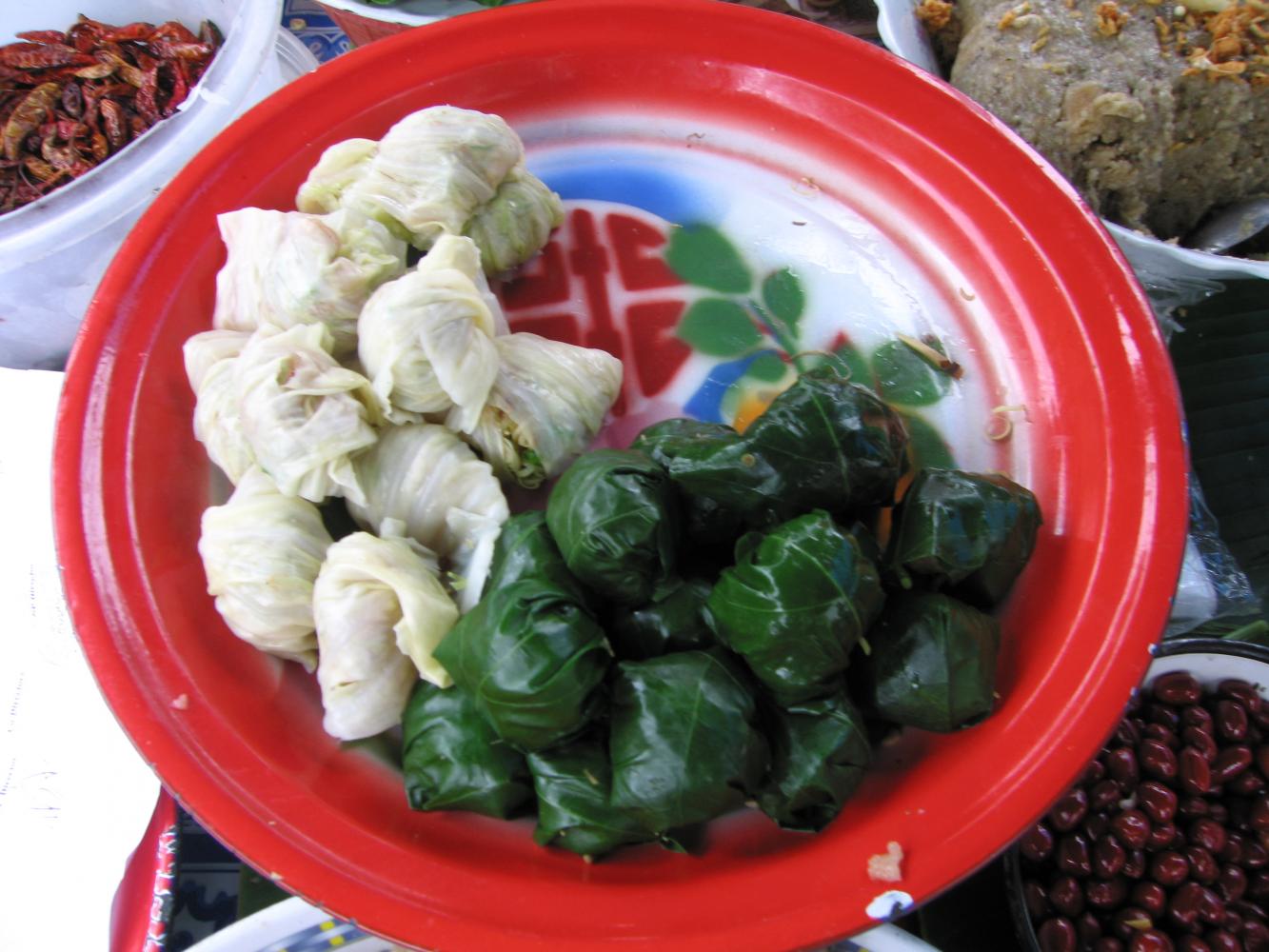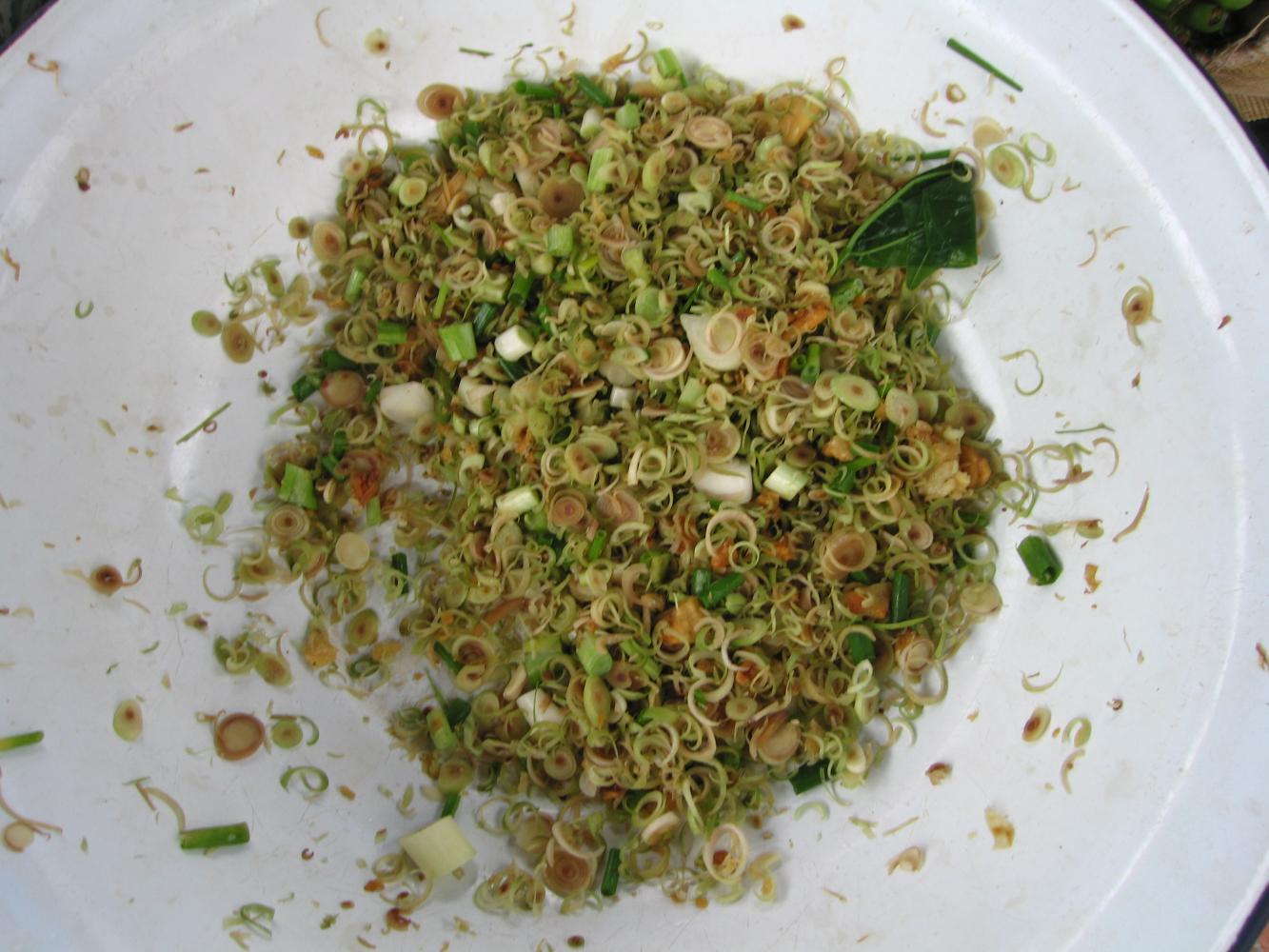The number of traditional Thai snacks has sadly diminished over time. One old favourite, miang kam, is a savoury snack that requires meticulous skill to prepare. Its many ingredients are, however, readily available in the kitchen to achieve the perfect balance of flavours.
Miang kam translates as something made into a bite-sized piece. The various ingredients are proportionately placed on a leaf with a sweet/salty sauce added on top. The leaf is then folded and eaten. It's perfect for family members to spend quality time together, munching miang kam as the afternoon passes. The ingredients can be replenished along the way.
Miang kam is made up of three components: miang leaf, krueang miang and miang sauce. In the past, the miang leaf was mainly bai thong lang, as it was succulent, odourless and easy to find. In more recent times, most thong lang trees have been cut down and so the leaves have become scarce. Another type of leaf, bai chaplu, which has a strong smell, has taken its place. Some may be put off by chaplu's pungency, but it is abundant, easy to grow and very cheap.
Krueang miang has many ingredients. Coconut is shredded into tiny pieces, left to dry and toasted until golden brown. Roasted coconut can be prepared a few days in advance and stored for long periods of time.
Krueang miang also includes shallots, lime, ginger, prik kee nu (bird's eye chilli) -- all sliced into small pieces -- roasted peanuts and dried shrimp.
Miang sauce is prepared by pounding roasted coconut with galangal and a little bit of shrimp paste. The mixture is fried with palm sugar, fish sauce and some water until it becomes thick. A good miang sauce must be viscous with a good balance of sweetness and saltiness.
Making miang kam is time-consuming. Every step is elaborate and requires delicacy. Even when you are eating miang kam, care should be employed: you have to place the ingredients on a thong lang or chaplu leaf, douse them with miang sauce and wrap the leaf before you eat.

Lao miang kam.
The unique flavour of miang kam is achieved through a clever combination of ingredients. There is the nutty taste of roasted coconut and peanut, the sourness of lime, the saltiness of dried shrimp, the hotness of chilli and the sweetness of the sauce.
This snack is usually had in the afternoon on weekends or holidays to entice family members to spend time together. In the old days, miang kam was available in some shops where miang leaves and accompanying ingredients were placed in a bamboo basket, the roasted coconut in a glass jar and the miang sauce in an enamel bowl.
Flashback to over 30 years ago, on weekend afternoons in the summer, people would flock to Sanam Luang with their families and picnic there. Many vendors sold miang kam and offered mat rental so visitors could sit on them to enjoy the scenery and keep an eye on their children. It was a fun time for all. The adults were happy eating their delectable snacks while the children had a great time flying kites.
An adaptation of miang kam, where the roasted coconut is replaced with grilled pla tu (steamed mackerel), is called miang pla tu. The dish has become very popular as it makes a perfect accompaniment to alcohol. Another variation is miang kana, which comes with boiled sliced pork, lime juice, ginger, roasted peanuts and a spicy seafood sauce. This dish is also good with alcohol.
Another type of miang dish which is harder to find is miang Lao. This uses pickled cabbage. The krueang miang is prepared by frying minced pork with ground roasted peanut, sugar and fish sauce until it is relatively dry and has a sweet and salty flavour. Then it is pressed into small balls and wrapped in pickled cabbage. The balls are eaten with khao tang (rice cracker) made into small pieces. Miang Lao gets its saltiness from the balls, its sourness from the pickled cabbage and its crispiness from the rice cracker.
There are two types of miang Lao made in Laos. The first is wrapped with bai chaplu and kale leaves. The second uses boiled lettuce and thong lang leaves.

Lao miang kam ingredients.
Lao kreuang miang is made by pounding steamed glutinous rice until fine. Then it is fried with salt and sugar, sliced lemongrass, small garlic cloves, ginger, crushed roasted peanut, fresh bird's eye chilli and deep fried dry chilli.
The sticky rice is pressed into balls, inserted into the krueang miang and wrapped in fresh or boiled leaves. The amount of chilli is later added according to individual preference.
Miang kam is not just a representation of an element of Thai food culture, it is a representation of Thai society and way of life, albeit one that is slowly disappearing. The lifestyle of Thai people, at least in urban areas, has become hurried and hectic and quick meals have become a norm. Making miang kam requires both time and patience and is best enjoyed when all the family is together, an occurrence that is rarer nowadays.

